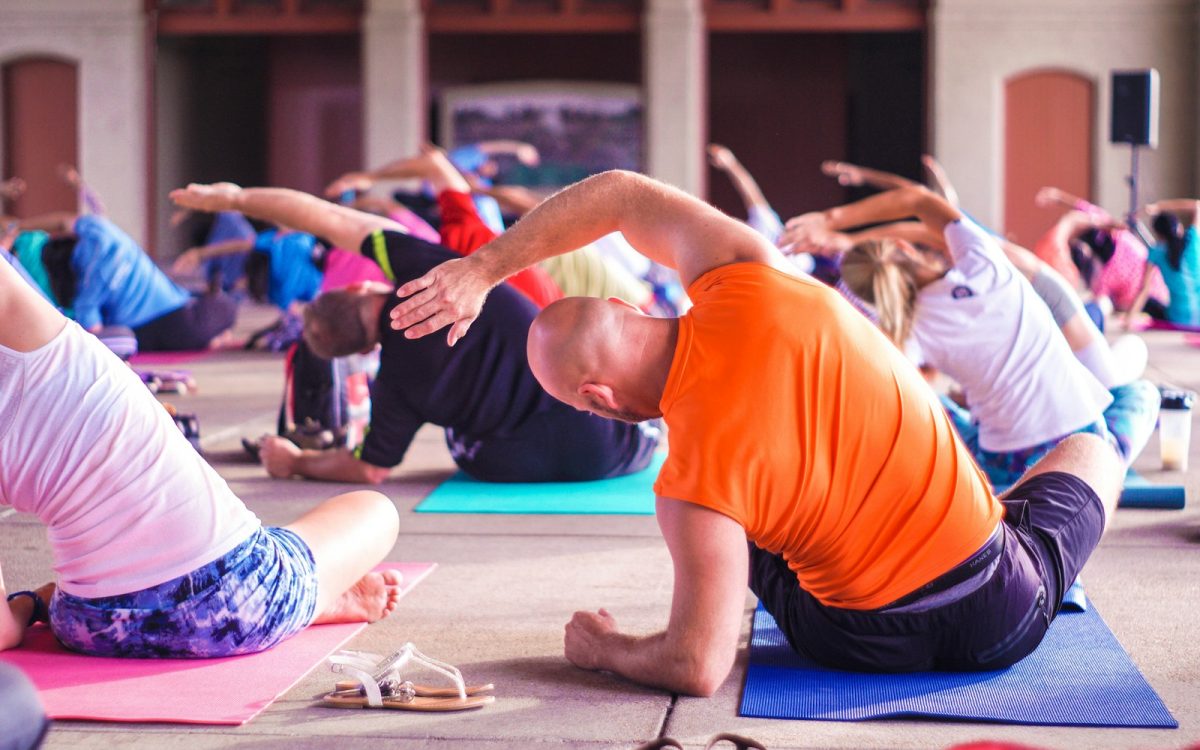Neck pain is a prevalent condition that affects individuals of all ages and backgrounds. It can manifest as a dull ache, sharp discomfort, or a persistent stiffness that limits mobility. The neck, or cervical spine, is a complex structure composed of vertebrae, muscles, ligaments, and nerves.
This intricate system allows for a wide range of motion while also providing support for the head. However, due to its dynamic nature and the demands placed upon it, the neck is particularly susceptible to injury and strain. The experience of neck pain can vary significantly from person to person.
Some may encounter acute pain that arises suddenly, often following an injury or strain, while others may suffer from chronic pain that lingers for months or even years. Factors such as age, lifestyle, and overall health can influence the severity and duration of neck pain. Understanding the underlying mechanisms of neck pain is crucial for effective management and treatment.
It is essential to recognize that while neck pain can be a standalone issue, it may also be symptomatic of broader health concerns, necessitating a comprehensive approach to diagnosis and care.
Key Takeaways
- Neck pain can be caused by poor posture, muscle strain, injury, or underlying health conditions.
- Common causes of neck pain include muscle tension, poor posture, injury, and degenerative diseases.
- Exercise is important for relieving neck pain as it helps to strengthen and stretch the muscles in the neck and upper back.
- Effective exercises for neck pain relief include neck stretches, shoulder rolls, and gentle neck rotations.
- Stretching, strengthening, and posture correction exercises can all help to alleviate and prevent neck pain.
Common Causes of Neck Pain
There are numerous factors that can contribute to neck pain, ranging from poor posture to underlying medical conditions. One of the most common culprits is muscle strain, often resulting from activities such as prolonged computer use or sleeping in an awkward position. These everyday habits can lead to muscle fatigue and tension, causing discomfort that may radiate down the shoulders and upper back.
Additionally, repetitive motions or sudden jerks—such as those experienced in sports or during accidents—can result in sprains or strains that exacerbate neck pain. Another significant cause of neck pain is degenerative disc disease, which occurs when the intervertebral discs lose hydration and elasticity over time. This condition can lead to herniated discs, where the soft inner material protrudes through the outer layer, pressing on nearby nerves and causing pain.
Osteoarthritis is another age-related condition that can affect the cervical spine, leading to inflammation and stiffness in the joints. Furthermore, conditions such as cervical radiculopathy, where nerve roots are compressed or irritated, can result in radiating pain down the arms and into the hands. Understanding these causes is vital for developing effective treatment strategies tailored to individual needs.
Importance of Exercise for Neck Pain Relief

Exercise plays a pivotal role in alleviating neck pain and promoting overall spinal health. Engaging in regular physical activity helps to strengthen the muscles that support the cervical spine, enhancing stability and reducing the risk of injury. Moreover, exercise increases blood flow to the affected areas, facilitating healing and reducing inflammation.
This is particularly important for individuals suffering from chronic neck pain, as a sedentary lifestyle can exacerbate symptoms and lead to further complications. Incorporating specific exercises into a daily routine can also improve flexibility and range of motion in the neck. Stretching and strengthening exercises target the muscles surrounding the cervical spine, helping to alleviate tension and discomfort.
Additionally, exercise can serve as a natural stress reliever, addressing one of the psychological components often associated with chronic pain. By fostering a sense of well-being and improving physical fitness, exercise not only aids in pain relief but also enhances overall quality of life.
5 Effective Exercises for Neck Pain Relief
| Exercise | Description |
|---|---|
| Neck Retraction | Gently tuck your chin in and move your head backwards, hold for a few seconds and then release. |
| Neck Side Bend | Tilt your head to one side, bringing your ear towards your shoulder, hold for a few seconds and then switch to the other side. |
| Neck Rotation | Slowly turn your head to one side, hold for a few seconds and then turn to the other side. |
| Shoulder Roll | Roll your shoulders backwards in a circular motion, then switch to rolling them forwards. |
| Upper Trapezius Stretch | Gently tilt your head to one side and use your hand to apply light pressure to the opposite side of your head, hold for a few seconds and then switch to the other side. |
1. Neck Tilts: This simple exercise involves gently tilting the head from side to side. Start by sitting or standing with a straight back.
Slowly tilt your head toward your right shoulder until you feel a gentle stretch on the left side of your neck. Hold this position for 15-30 seconds before returning to the center and repeating on the left side. This exercise helps to stretch the muscles on either side of the neck, promoting flexibility and reducing tension.
2. Chin Tucks: The chin tuck is an effective exercise for improving posture and strengthening the neck muscles. Begin by sitting or standing with your shoulders relaxed.
Gently tuck your chin toward your chest while keeping your eyes forward. Hold this position for 5 seconds before releasing. Repeat this exercise 10-15 times.
Chin tucks help to realign the cervical spine and strengthen the deep neck flexors, which are crucial for maintaining proper posture. 3. Shoulder Shrugs: This exercise targets the upper trapezius muscles, which often become tense due to stress or poor posture.
Stand or sit with your arms at your sides. Inhale deeply and raise your shoulders toward your ears as high as possible. Hold for a moment before exhaling and relaxing your shoulders back down.
Repeat this movement 10-15 times. Shoulder shrugs help to relieve tension in the upper back and neck area. 4.
Neck Rotations: To improve mobility in the cervical spine, neck rotations are highly beneficial. Sit or stand with a straight back and slowly turn your head to the right until you feel a gentle stretch. Hold this position for 15-30 seconds before returning to center and repeating on the left side.
This exercise enhances flexibility in the neck and can help alleviate stiffness. 5. Wall Angels: This exercise focuses on improving posture by engaging the shoulder blades and upper back muscles.
Stand with your back against a wall, feet about six inches away from it. Press your lower back against the wall while raising your arms to form a “W” shape with your elbows bent at 90 degrees. Slowly slide your arms up into a “Y” shape while keeping them in contact with the wall.
Return to the starting position and repeat 10-15 times. Wall angels promote proper alignment and strengthen postural muscles.
Stretching Exercises for Neck Pain Relief
Stretching exercises are essential for relieving tension in the neck and improving overall flexibility. One effective stretch is the upper trapezius stretch, which targets one of the primary muscle groups involved in neck pain. To perform this stretch, sit or stand upright and gently tilt your head to one side while using your hand to apply light pressure on the opposite side of your head.
Hold this position for 15-30 seconds before switching sides. This stretch helps alleviate tightness in the upper trapezius muscles and promotes relaxation. Another beneficial stretching exercise is the levator scapulae stretch, which targets a muscle that connects the cervical spine to the shoulder blade.
To perform this stretch, sit comfortably and turn your head to one side while looking down toward your armpit. Use your hand to gently pull your head further down for an added stretch. Hold for 15-30 seconds before switching sides.
This stretch not only relieves tension but also enhances mobility in the neck region. Incorporating these stretching exercises into a daily routine can significantly improve neck flexibility and reduce discomfort over time. Regular stretching helps maintain muscle elasticity and prevents stiffness that often accompanies prolonged periods of inactivity or poor posture.
Strengthening Exercises for Neck Pain Relief

Strengthening exercises are crucial for building resilience in the muscles that support the cervical spine. One effective strengthening exercise is the isometric neck exercise, which involves contracting the neck muscles without moving the head. To perform this exercise, sit or stand with good posture and place your hand against your forehead.
Gently push your head against your hand while resisting with your hand for about 5 seconds before relaxing. Repeat this exercise on each side of your head (left and right) as well as at the back (placing your hand behind your head). This exercise strengthens various muscle groups in the neck without straining them.
Another valuable strengthening exercise is the prone Y raise, which targets both the upper back and neck muscles simultaneously. Lie face down on a flat surface with your arms extended overhead in a “Y” position. Keeping your forehead on the ground, lift your arms off the floor while squeezing your shoulder blades together.
Hold this position for a few seconds before lowering back down. Repeat this movement 10-15 times. The prone Y raise not only strengthens postural muscles but also promotes better alignment of the cervical spine.
Incorporating these strengthening exercises into a regular fitness routine can enhance muscle endurance and stability in the neck region, ultimately reducing susceptibility to injury and alleviating chronic pain.
Posture Correction Exercises for Neck Pain Relief
Posture correction exercises are vital for addressing one of the primary contributors to neck pain: poor posture. One effective exercise is the seated row with resistance bands, which helps strengthen the upper back muscles responsible for maintaining proper alignment. To perform this exercise, sit on a chair with good posture while holding resistance bands anchored at foot level in front of you.
Pull the bands toward you while squeezing your shoulder blades together, then slowly release back to starting position. Repeat this movement 10-15 times. Another beneficial posture correction exercise is wall sits with shoulder blade retraction.
Stand with your back against a wall and slide down into a seated position while keeping your back flat against it. While maintaining this position, focus on retracting your shoulder blades together as if you were trying to pinch them together behind you. Hold this position for 20-30 seconds before standing up again.
This exercise reinforces proper spinal alignment while engaging key postural muscles. By incorporating posture correction exercises into daily routines, individuals can develop better awareness of their body mechanics and reduce strain on their necks over time.
Tips for Preventing Neck Pain
Preventing neck pain requires a multifaceted approach that encompasses lifestyle changes, ergonomic adjustments, and mindful practices. One fundamental tip is to maintain good posture throughout daily activities—whether sitting at a desk or using electronic devices—by ensuring that screens are at eye level and chairs provide adequate support for the lower back. In addition to ergonomic considerations, regular breaks during prolonged periods of sitting or repetitive tasks are essential for preventing muscle fatigue and strain in the neck area.
Taking short breaks every hour to stretch or change positions can significantly reduce tension buildup. Furthermore, incorporating relaxation techniques such as deep breathing or mindfulness meditation can help manage stress levels that often contribute to muscle tension in the neck region. Engaging in activities that promote overall physical fitness—such as yoga or Pilates—can also enhance flexibility and strength while fostering body awareness.
By adopting these preventive measures alongside regular exercise routines tailored specifically for neck health, individuals can significantly reduce their risk of developing chronic neck pain while enhancing their overall well-being.




